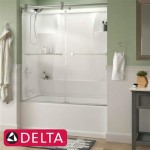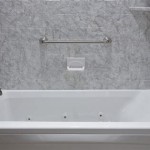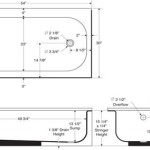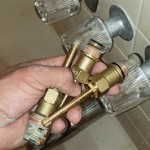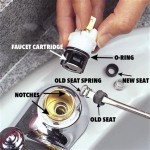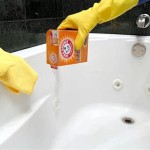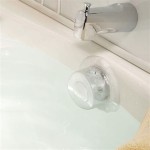Best Mildew Resistant Bathtub Mats: A Comprehensive Guide
The bathtub is a sanctuary, a place for relaxation and rejuvenation. However, the damp and humid environment inherent in a bathroom makes it a prime breeding ground for mold and mildew. This is particularly problematic for bathtub mats, which are designed to sit at the bottom of the tub and are constantly exposed to moisture. Selecting a mildew-resistant bathtub mat is therefore crucial for maintaining a clean, safe, and hygienic bathing experience. This article will explore the key factors to consider when choosing a mildew-resistant bathtub mat, highlighting materials, design elements, and maintenance practices that contribute to preventing the growth of unwanted microorganisms.
Understanding Mold and Mildew Resistance
Mold and mildew are types of fungi that thrive in moist and warm environments. They can cause a variety of problems, from unsightly stains and unpleasant odors to potential health issues, especially for individuals with allergies or respiratory sensitivities. Mildew-resistant bathtub mats are designed to inhibit the growth of these fungi. This resistance is achieved through a combination of material selection, design features, and the incorporation of antimicrobial agents.
It's important to understand that "mildew-resistant" does not mean "mildew-proof." All bathtub mats, regardless of their construction, require regular cleaning and maintenance to prevent the buildup of organic matter that fungi can feed on. However, a mildew-resistant mat will significantly slow down the growth of mold and mildew, requiring less frequent and less intensive cleaning.
The effectiveness of a bathtub mat's mildew resistance depends largely on the materials used in its construction. Certain materials, like natural rubber and some types of plastic, are inherently more susceptible to fungal growth. Others, such as certain synthetic rubbers and treated plastics, offer better resistance.
Key Features of Mildew-Resistant Bathtub Mats
When selecting a mildew-resistant bathtub mat, several key features should be considered to ensure optimal performance and longevity. These features encompass material properties, design considerations, and surface treatments.
Material Selection: The material of the bathtub mat is the primary determinant of its mildew resistance. Common materials include natural rubber, synthetic rubber (such as PVC, TPE, and TPR), and plastic. Natural rubber, while offering good grip, is porous and prone to mold and mildew growth. Synthetic rubbers, depending on their composition and treatment, can offer superior resistance. PVC is a common choice, but it can become brittle over time and may not be the most environmentally friendly option. TPE (thermoplastic elastomer) and TPR (thermoplastic rubber) are generally considered more durable and mildew-resistant alternatives. Some mats are treated with antimicrobial agents to further inhibit fungal growth.
Design for Drainage: A crucial design element for mildew resistance is effective drainage. Bathtub mats with numerous drain holes or channels facilitate the rapid removal of water from the surface. This prevents water from pooling and creating a favorable environment for mold and mildew to flourish. The size and spacing of the drain holes are also important considerations. Smaller, more closely spaced holes may provide better drainage but could also be more difficult to clean. Larger holes offer less complete drainage but are easier to rinse and maintain.
Surface Texture: The surface texture of the mat can also influence its mildew resistance. Smooth, non-porous surfaces are generally easier to clean and less likely to harbor mold and mildew spores than rough or textured surfaces. However, a smooth surface can compromise grip, so a balance must be struck between ease of cleaning and slip resistance. Some mats feature a textured surface with antimicrobial properties to provide both grip and mildew resistance.
Antimicrobial Treatments: Many modern bathtub mats are treated with antimicrobial agents that inhibit the growth of mold, mildew, and bacteria. These agents are typically incorporated into the material during manufacturing or applied as a surface coating. The effectiveness and longevity of these treatments can vary depending on the type of agent used and the manufacturing process. Some antimicrobial treatments are effective for the life of the mat, while others gradually degrade over time. It's important to check the product specifications to determine the duration of the antimicrobial protection.
Suction Cups: Bathtub mats rely on suction cups to adhere securely to the tub surface and prevent slipping. The quality and design of the suction cups are crucial for safety and also affect mildew resistance. Poorly designed suction cups can create pockets where water can accumulate, promoting fungal growth. Look for mats with numerous, evenly spaced suction cups that provide a strong and consistent grip without trapping water.
Maintaining a Mildew-Resistant Bathtub Mat
Even the most mildew-resistant bathtub mat requires regular cleaning and maintenance to prevent the buildup of organic matter and maintain its effectiveness. Proper maintenance practices are essential for extending the lifespan of the mat and ensuring a safe and hygienic bathing environment.
Regular Cleaning: The frequency of cleaning depends on the usage and environmental conditions, but generally, the bathtub mat should be cleaned at least once a week. After each use, rinse the mat thoroughly with clean water to remove any soap residue, body oils, or other debris. Allow the mat to air dry completely before placing it back in the tub. Periodically, the mat should be cleaned with a mild detergent or a diluted bleach solution. Avoid using harsh chemicals or abrasive cleaners, as these can damage the material and reduce its mildew resistance. Scrub the mat with a soft brush or sponge to remove any visible mold or mildew. Rinse thoroughly and allow to air dry completely.
Air Drying: Allowing the bathtub mat to air dry completely between uses is crucial for preventing mildew growth. After rinsing the mat, hang it up to dry in a well-ventilated area. Avoid leaving the mat lying flat in the tub or on the bathroom floor, as this will trap moisture and create a favorable environment for mold and mildew. If possible, hang the mat in direct sunlight, as sunlight has natural antimicrobial properties. If hanging is not an option, prop the mat up against the wall or the side of the tub to allow air to circulate around it.
Proper Storage: When the bathtub mat is not in use for an extended period, it should be stored in a clean, dry place. Avoid storing the mat in a damp or humid environment, as this will encourage mold and mildew growth. Before storing the mat, ensure that it is completely dry. Consider storing the mat in a mesh bag or a container with ventilation holes to allow air to circulate around it.
Addressing Existing Mold and Mildew: If mold or mildew does appear on the bathtub mat, it is important to address it promptly. Remove the mat from the tub and clean it thoroughly with a diluted bleach solution (1 part bleach to 10 parts water). Allow the solution to sit on the affected areas for several minutes before scrubbing with a soft brush or sponge. Rinse thoroughly and allow to air dry completely. If the mold or mildew is deeply embedded in the material, it may be necessary to soak the mat in the bleach solution for a longer period. In severe cases, the mat may need to be replaced. Regularly inspecting the mat and addressing any signs of mold or mildew promptly will help to prevent the problem from worsening.
Ventilation: Adequate ventilation in the bathroom is essential for preventing the buildup of moisture and humidity, which contribute to mold and mildew growth. Ensure that the bathroom is properly ventilated by opening a window or using an exhaust fan during and after showers or baths. This will help to reduce the moisture levels in the air and create a less favorable environment for mold and mildew to thrive.
Regular Inspection: Regularly inspect the bathtub mat for signs of mold, mildew, or wear and tear. Check the surface of the mat, the suction cups, and the drain holes for any discoloration, stains, or buildup. If you notice any signs of mold or mildew, clean the mat immediately. If the mat is showing signs of significant wear and tear, such as cracks, tears, or loose suction cups, it should be replaced.
By carefully selecting a mildew-resistant bathtub mat and following proper maintenance practices, homeowners can create a safer, cleaner, and more enjoyable bathing experience. The combination of material selection, design features, and consistent cleaning is key to preventing the growth of mold and mildew and extending the lifespan of the bathtub mat.

Mind Reader Flexible Mildew Resistant Bamboo Bath Mat Environmentally Friendly Target

The Best Mold And Mildew Resistant Bath Mats For Any Budget Help You

The Best Mold And Mildew Resistant Bath Mats For Any Budget Help You

Mainstays 14 X 28 Non Slip Mildew Resistant Scrubber Pvc Bathtub Mat For Shower With Suction Cups And Drain Holes Grey Com

Bath Bliss Mildew Proof Mat 5540 The Home Depot

Non Slip Flower Shaped Bathtub Mat Stickers 20pcs Bahrain Ubuy

Bath Bliss Mildew Proof Mat 5540 The Home Depot

Non Slip Bath Mat Rubber Tub Buy Vive Health

Mold Resistant Shower Mat

Extra Long Non Slip Bathtub Mat Washable Mildew Resistant Anti Bacterial 39l X 16w Teal Shower For And Bathroom From Mixsmoking 13 69 Dhgate Com

